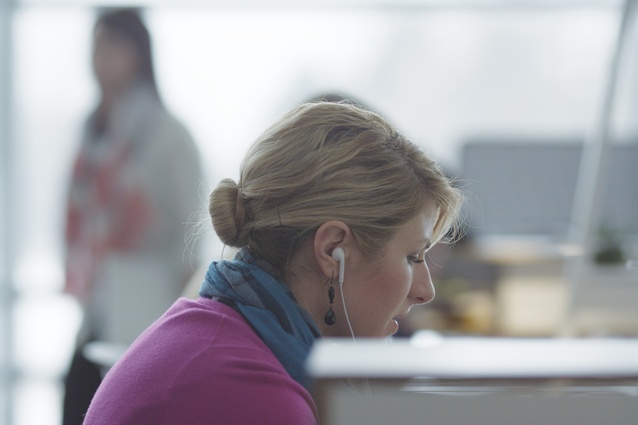Reinventing what privacy means
Partner Content sponsored by Workscape (Steelcase NZ): Most people think about privacy in terms of other people bothering us, but it’s really about control, say Steelcase researchers.
“When Steelcase started looking into privacy in the early 1980s, our researchers were primarily exploring spatial properties, especially the analytics of sound management. By the early ‘90s, they had synthesised a solid understanding of four mechanisms that regulate privacy in the physical setting: acoustical, visual, territorial and informational,” says Donna Flynn, director of Steelcase’s Workscape Futures.
“External distractions – things like sound or what we see – can be controlled in the environment, but it’s really up to each individual to figure out how to control internal distractions. A big insight from our research was that the way each person controls distractions is very different,” – Donna Flynn
In other words, privacy in any setting is determined by what you hear, what you see, how you define your boundaries and/or what kind of information is revealed and concealed
“But now we live in an online world as well as a physical one. At the same time that it’s brought us closer, technology has invaded people’s privacy, exacerbating concerns and sensitivities. We wanted to know more about current human needs for privacy and the types of privacy experiences that are important to workers today. We realised we needed to look deeper and apply a new lens,” explains Melanie Redman, a member of the Steelcase WorkSpace Futures team that recently researched privacy by surveying, interviewing and observing workers in North America, Europe and Asia.
PRIVACY IN PHYSICAL SETTINGS
According to Steelcase research, people instinctively evaluate four, often-overlapping mechanisms that determine if a space can provide the type of privacy experience they seek:
Acoustical privacy: Undisturbed by noise and/or able to create noise of your own without disturbing others.
Visual privacy: Not being seen by others and/or freeing yourself from sight-induced distractions.
Territorial privacy: Claiming a space and controlling it as your own (olfactory privacy is a subset).
Informational privacy: Keeping content (analog and/or digital) and/or a conversation confidential.
As a result of their work, the Steelcase researchers framed the basic psychological context for individual privacy into two spheres: information control – what others can know about us – and stimulation control – managing distractions. They found patterns that were consistent globally: Today’s workers repeatedly shift between revealing and concealing themselves, and between seeking stimulation and blocking it out.
“The most surprising thing to us was how universal the need for privacy is in today’s world. We expected that in countries like China, which has a very collectivist culture, privacy might be less of a need than in countries like the United States, where individualism is prized. But what we discovered is that people all over the world want privacy at times. In different cultures, they may seek it primarily for different reasons and in ways that are permitted in their culture, but the need for privacy sometimes – at work as well as in public – is as important to people as is the need to be with others,” says Wenli Wang, who conducted Steelcase’s privacy research in China.
People in Western countries seek privacy at work most often in order to manage distractions, whereas in China the primary motivation is to keep information and one’s self outside of others’ sight, explains Wang.
“In China, people don’t think about individual privacy in the same way that Westerners do. In the Western world, it’s more often about stimulation control. Being distracted isn’t as much of a talking point here in China. It’s more about information control, keeping personal information from others and getting away from other people watching you. That’s challenging at work because workstation density is fairly extreme and there typically aren’t options inside the workplace for taking a personal call or having a personal conversation.”
“As someone who grew up in the U.S.’s deep south and now living in Shanghai, I’m fascinated by how much people are different and how much they are alike. Before we did this research I assumed that Chinese people didn’t place much value on privacy since it’s such a collectivist culture. But the surveys manifested otherwise. Though Chinese people think about privacy differently than those in the U.S., it’s a universal need,” – Wenli Wang
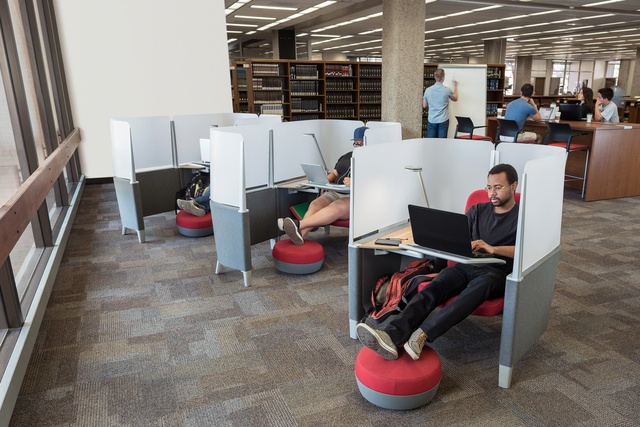
How people use space as an extension of culture has been studied indepth since the early 1960s. An American cultural anthropologist, Edward T. Hall, coined the term proxemics (the study of human spatial requirements and its effect on communication, behaviour and interactions) and established it as a subcategory of nonverbal communication. Hall investigated spatial zones based on the amount of distance between others and ourselves: intimate space, personal space, social space and public space.
Each is considered appropriate for different situations, and personal space is where people feel comfortable working with others. While the specific distances vary some, each national culture has spatial norms for each of the four zones. In North America, for example, intimate space extends 18 inches from the body, while personal space extends out to 4 feet, social space to 12 feet, and the public zone is beyond that.
Some of the stresses of today’s work environments can no doubt be traced to the fact that people’s personal space is being compromised. Many are working in environments that routinely bring coworkers close to or even within intimate range, says Taylor. This invasion is not only occurring in physical space. It’s also happening digitally when people make video calls on their mobile devices, which puts the other person less than an arm’s length away. In contrast, a videoconferencing configuration that situates distributed team members “across a shared table” makes for a much more natural and comfortable exchange among peers.
Though there are culturally based differences regarding privacy and acceptable ways to achieve it, Steelcase’s work with global companies has shown that organisational protocols usually trump nation-based norms fairly quickly, says Redman. “If a company places a high value on collaboration and designs an open, collaborative environment in a location where the local culture doesn’t support those behaviors, it may wonder why those local employees don’t like their new office,” she explains.
Within any given culture, the researchers emphasise, privacy is always ultimately contextual to the individual. This means that the privacy that each person seeks depends on personality, state of mind at the moment and the task at hand. “While a particular environment may provide the stimulation necessary for creative work on one day, that same environment may provide only distraction the next day,” says Redman.
Moreover, says Wang, Steelcase’s research underscored that mental privacy and physical privacy, though often related, aren’t necessarily synonymous. “People talked about having their own ‘space’ – i.e., their own headspace, with the freedom and safety to do and think whatever they want without judgment.”
“There really is no one-size-fits-everybody-all-the-time solution. Privacy encompasses many different needs and behaviors.” – Melanie Redman, researcher, Workscape Futures.
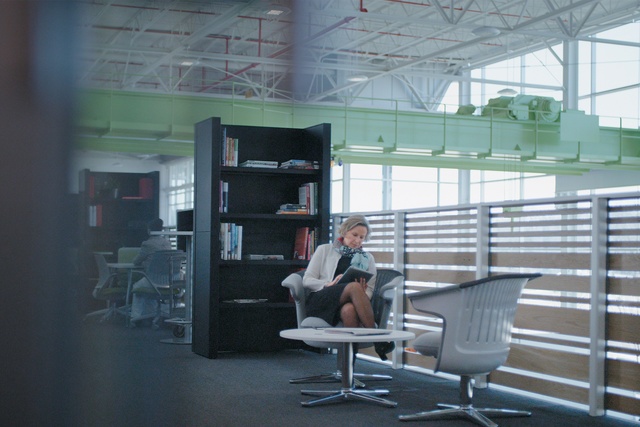
FIVE PRIVACY INSIGHTS
“When people say they need some privacy, it can mean very different things. By diving deeper into the experiences that people seek out for privacy, we were able to identify five key insights,” says Redman. “As an output of our research, we coded these five key insights into a set of principles for experiencing individual privacy. Examining each of the five principles on its own is a pathway for gaining a deeper understanding of human privacy needs.”
By synthesising findings from academic studies with their own primary investigations, Steelcase researchers identified and defined these five privacy experiences:
1: STRATEGIC ANONYMITY: BEING UNKNOWN / “INVISIBLE”
The ability to make yourself anonymous is a key aspect of privacy, in that it frees you from the restraints incurred through normal social surveillance. Being unknown allows people to avoid interruptions, as well as express themselves in new ways and experiment with new behaviours.
The key is that it’s strategic – individuals choosing when and why to make themselves anonymous. For instance, when people go to a café to get focused work done, they are often seeking to block the social distractions of the workplace. The low-level vibe of strangers can be just right to stimulate thinking without attention becoming diverted.
Examples:
- Going to work at a café or other place where you’re unknown
- Engaging in online discussions using an avatar or handle
2: SELECTIVE EXPOSURE: CHOOSING WHAT OTHERS SEE
Our innermost thoughts and feelings, our most personal information and our own quirky behaviors can only be revealed if we choose to do so. People choose to reveal some information to certain people or organisations, while revealing different information to others. Identity construction is a well-established concept in the social sciences, recognising that people represent themselves differently to different people.
Today, as personal information is being shared across new channels, people are raising new questions about what’s “safe” to divulge. While the decision to share information involves the weighing of benefits and risks, the choice is different for each person. Culture, gender and personality influence the choice through implied permissions or inhibitions, as well as personal comfort. Behaviours that are permitted in one culture – such as naps at work in China or relaxing with wine at lunch in France – may be frowned upon in other parts of the world.
Examples:
- Opting for a telephone call instead of a video conference
- Choosing which personal items to display in a workstation
3: ENTRUSTED CONFIDENCE: CONFIDENTIAL SHARING
Privacy isn’t just about being alone. We also seek privacy with selected others. When we choose to share personal information or our emotions with someone else, there is a measure of trust involved – an assumption that the other person understands that the shared information isn’t for general public consumption. There are many instances in daily work when small groups – two or three people – want to confer. But in today’s mostly open-plan workplaces, it’s difficult to find places where such conversations can occur without being scheduled. In too many cases, this reality translates to lost opportunities.
Examples:
- Discussing a personal situation with a colleague
- Being in a performance review with your manager
4: INTENTIONAL SHIELDING: SELF PROTECTION
Personal safety isn’t just about protection from physical harm. There is a strong psychological component, as well. The feeling of personal invasion that people report after a home break-in indicates the close connection between personal territory and sense of self. We take active measures to protect ourselves from such intrusions.
Though less traumatic than a theft of personal belongings, people experience similar feelings of invasion at work and seek ways to protect themselves from distractions and prying eyes. Self protection may also involve developing a point of view without the distracting influence of groupthink so that, when the group comes together to collaborate, individuals can bring stronger, more compelling insights to the challenges at hand.
Examples:
- Wearing headphones to block out, audio distractions
- Sitting with your back against a wall
- Hiding your computer screen
5: PURPOSEFUL SOLITUDE: SEPARATING YOURSELF
Isolation is a state of mind – it’s possible to feel isolated from a group while that group surrounds you. But solitude is physical: intentionally separating from a group to concentrate, recharge, express emotions or engage in personal activities. People in individualistic cultures, such as the United States, may take times of solitude almost for granted, but even within a collectivist culture, such as China, being alone sometimes is a fundamental need.
Examples:
- Finding an enclave
- Going outside
- Sitting in the farthest empty corner of a large room
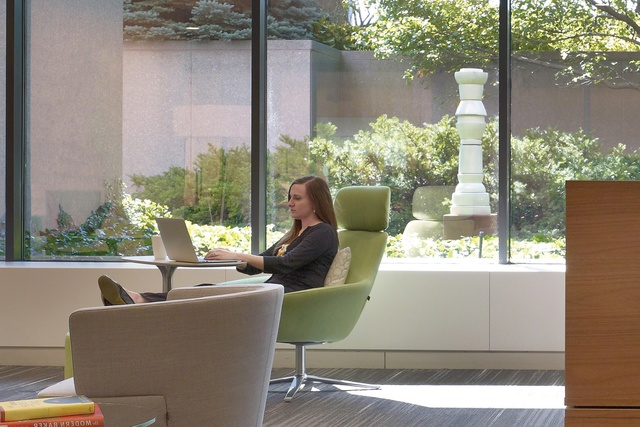
THE PRIVACY PARADIGM
As the researchers synthesised their work, it became clear that supporting people’s privacy needs in the workplace requires a diversity of environments.
“There’s a tendency to think about privacy primarily in terms of the private office. This paradigm has been embedded in workplace design,” says Flynn. “Our research confirmed that people seek privacy for various reasons and they want it for a variety of timeframes. Sometimes it might mean finding a place to sit down and focus for an hour, sometimes it might mean just being quiet for 20 minutes between crazy meetings to calm the mind and still your thoughts. We see opportunities to reinvent private spaces within the entire workplace landscape, to offer spaces that can be very personal and personalized for someone when they need it. Having choices and some control over your experiences at work is really key for people’s wellbeing and performance.”
“Privacy isn’t always about four walls and a door. You can have a measure of privacy with two walls, you can have privacy in open spaces. It depends on what kind of experience you’re looking for. ” – Melanie Redman
Even if not enclosed, informal settings that attend to human needs in obvious ways can feel more private than impersonal, institutional environments. Something as simple as high-back lounge seating can envelope a person in a semi-private cocoon.
For most workers, privacy needs ebb and flow throughout the day as they toggle between collaboration and tasks that require shallow individual focus, such as routine emailing, and those that require deep individual focus, such as analysing data or creating something new.
Mihaly Csikszentmihaly is prominent among psychologists who say humans are wired to seek deep absorption in complex challenges, achieving a state of consciousness that he described as flow. Of course, for individuals and teams, privacy alone can’t ensure flow, but the lack of privacy can obviously prevent it.
As much as people are wired for individual achievement, they’re also wired to crave collaboration. Working in privacy all the time can have as many negative impacts on performance as always working in collaboration, and also carries as many health risks as smoking, says David Rock.
Social interactions are a delicious thing to the brain…,” he explains. “Your brain loves interaction with people, it’s a very important part of keeping ourselves alive.”
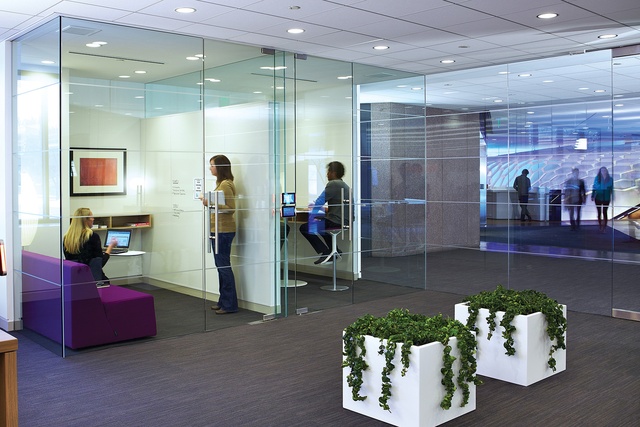
Because our brains are deeply social, if someone walks past our desk, we can’t help but look up, he notes. “It’s a knee-jerk reaction. So whether it’s someone walking past your desk or someone sending you an email, these distractions are much too powerful to avoid. So we need to create time and space to switch these things off and do deeper thinking… If we talk about pure collaboration, we see it’s actually about being able to come together and make thinking visible, and also being able to go away and do quiet work and then come back together. So the opportunity is to be able to reflect and then regroup, reflect and regroup.”
Because human needs for privacy and togetherness are yin and yang – essentially different but also complementarily linked – there is no single type of optimal workspace.
“What’s been overlooked in the push for collaborative work is the value of individual time in contributing to the collaborative effort,” says Flynn. “The value of collaborative work isn’t going away. Our research has shown that when you have diverse minds coming together to solve a problem, you tend to solve that problem with a higher-quality solution. But we need to recognize that collaboration 8–10 hours a day is going to lead to burnout. The way to support people is to provide the ability to move between individual time and collaborative time, having that rhythm between coming together to think about a problem and then going away to let those ideas gestate. That’s a really important, basic human rhythm.”
“We need to find the balance between the two ends of the spectrum,” she continues. “The future is really in that balance because people are going to continue to be mobile, people are going to continue to be augmented by technology and that’s going to drive the need for even more individual choice-making across the spectrum.”
CREATING A NEW ECOSYSTEM
A challenge for enterprises today is understanding people’s individual needs in the workplace. Especially because we’re now saturated with technology connections as well as in-person connections, most of today’s workers are operating in a dense informational landscape. Gaining the broad perspective of collaborative work is more important than ever. At the same time, this intensity makes having places for private refuge more important, too.
“People are social creatures. We don’t like to be ostracized. So when we’re in a group setting, our brains will easily change our minds to agree with others. That’s a danger of constant collaboration. It’s very important to also give people the chance for privacy, so they can form their own ideas to bring to the group.” – Melanie Redman
Achieving the right balance between privacy and collaboration is fundamentally about empowering individuals with choices and some measure of control over their environment.
No single type of work environment can provide the right balance between collaboration and privacy. But when workers can choose from a palette of place – an ecosystem of interrelated zones and settings that support their physical, cognitive and emotional needs — they can draw inspiration and energy from others as well as be restored by the calm of privacy.
Finally, the workplace needs to accommodate for a palette of presence – to allow teams to connect easily both in person and over distance through technology-based communication options to match their collaboration needs and their privacy boundaries.
Insight from research suggests that fulfilling work is defined by opportunities and experiences that enable people to do their best work, acting alone as well as engaging in collaboration with others. Throughout the world, there’s growing awareness that privacy at work shouldn’t be rationed as merely a symbol of status or a reward for a select few who are given private offices.
Instead, by providing places for moments of privacy for all workers throughout the organisation — in every country, every position and every demographic — enterprises can realise significant rewards: higher engagement, stronger collaboration, better productivity, improved worker wellbeing and, ultimately, innovation at the pace and scale that defines business success today.
To learn more about Steelcase workplace research and insights visit: 360.steelcase.com.
ArchitectureNow works with a range of partners in the A&D supply sector to source appropriate content for the site. This article has been sponsored by Workscape.

